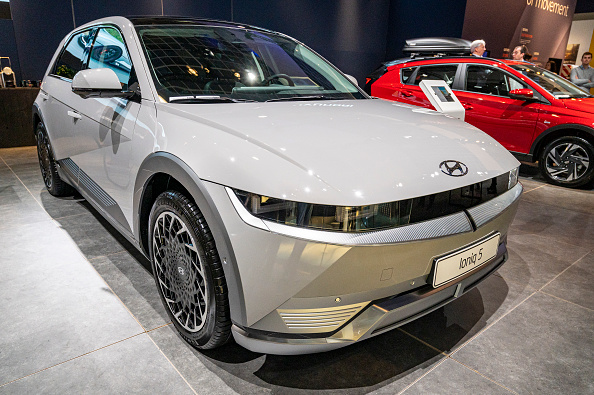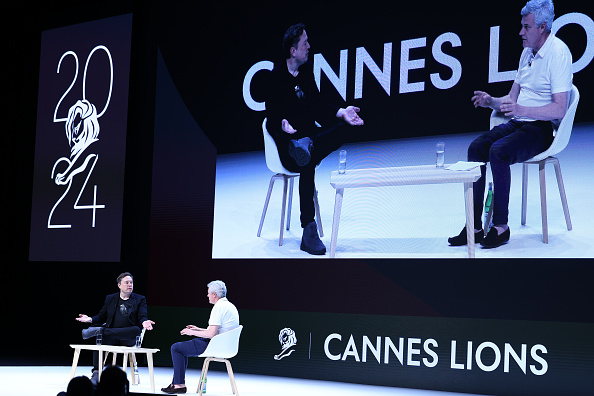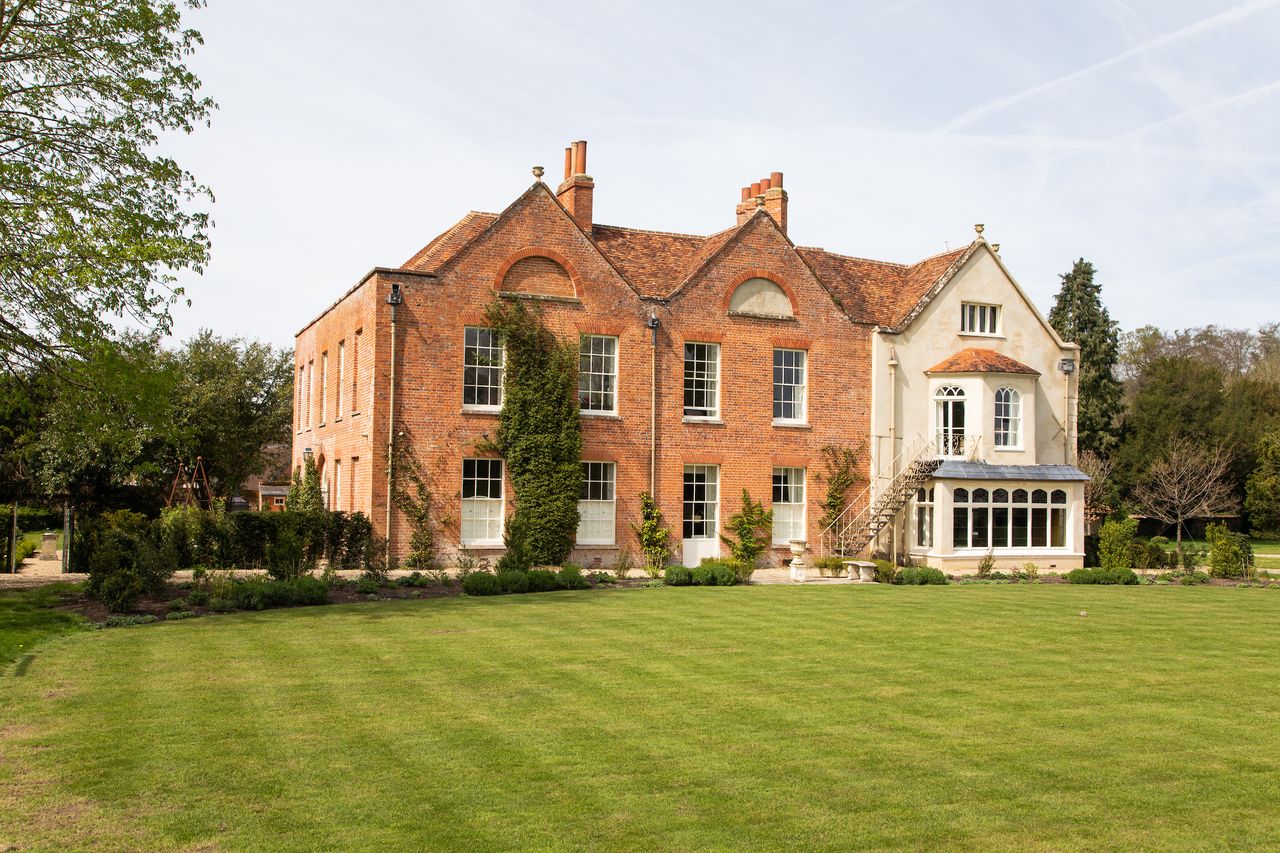How Did Hyundai Get So Cool?
Korean carmaker known for budget brands becomes EV innovator; sets sights on Tesla
Hyundai Motor was dreaming up an answer to Tesla when the company’s top executive sent its lead designer a photo of a bizarre-looking car that last rolled off assembly lines more than 70 years ago.
The Stout Scarab, manufactured in Michigan in the 1930s and 1940s, looked like an outlandish cross between a bus and a pontoon.
“Let’s face it, 10 years ago, our design strategy was all about the fast follower,” said SangYup Lee, the Hyundai designer. He said Euisun Chung, executive chair of Hyundai and its affiliate Kia, who sent the photo, wanted to stop imitating and get ahead of rivals.
“The message was: Inspiration can come from anywhere,” said Lee.
The Hyundai electric car that drew inspiration from the Scarab’s eye-catching streamline design, the Ioniq 6, has been a hit with critics. At the New York auto show in April, it was voted World Car of the Year.
Hyundai and Kia, the sibling Korean carmakers, have long had a reputation for making inexpensive, uninspiring cars. Over the past few years, though, they have become one of the leaders in the electric-vehicle race, with models that are turning heads at rival car companies—and among car buyers.
Asked last year about competition in the EV sector, Ford Motor Chief Executive Jim Farley said: “The ones I’m paying the most attention to are Hyundai/Kia, the Chinese and Tesla. That’s my list.”
Behind the push has been Chung, 52 years old, who has pressed for investment in EVs and moonshot technologies such as flying cars and robots. In 2020, he took control of the Hyundai Motor Group,one of Korea’s largest family-run conglomerates, from his father, Chung Mong-Koo.
Last year, Hyundai became the world’s third-largest automaking group, with 6.85 million vehicles sold, behind only Toyota Motor and Volkswagen. Now, the company, currently the third-largest seller of EVs in the U.S., is setting its sights on Tesla.
Tesla’s enormous success with its Model 3 showed the industry that the EV market was much bigger than many people thought, spurring Hyundai and Kia to move faster, said Michael O’Brien, a former vice president at Hyundai. “Hyundai leadership realises that the EV market is a jump ball,” he said.
Chung, whose grandfather founded the business 76 years ago, has told employees repeatedly that the company needs to be more forward-leaning. “We will not fear risks and only be reactive,” he told workers in January.
Hyundai and Kia have gone on a hiring spree, luring high-profile designers from other carmakers, including from German luxury brands. Their aim is to make their vehicles look and feel more luxurious.
Ford’s Farley lauded Hyundai’s Ioniq 5, which came out 2021, noting that some software features were better than Ford’s own. “That company has really found their stride with electric vehicles,” he said.
Tesla’s Elon Musk said last summer in a tweet about the EV market: “Hyundai is doing pretty good.”
Hyundai and Kia are a part of a conglomerate that also owns steel mills, shipyards and construction firms. It is largely controlled by Chung’s family through their shareholdings in the motor company and other affiliates.
The company got started in the auto business in 1967, when the country was still recovering from the Korean War, at first doing contract work for Ford. Its first in-house vehicles, the Pony and Excel, were inexpensive and so prone to quality problems that they became fodder for comedians on late-night TV.
Kia began in 1944 as a manufacturer of metal parts and bicycles, and a decade later, licensed versions of Honda motorcycles and Mazda trucks and cars. After it declared bankruptcy in 1997, Hyundai purchased a controlling stake. It now owns nearly 34%.
Hyundai entered the U.S. car market in 1986, followed by Kia in 1993. Both were budget brands. When Chung’s father took over in 1996, he made solving quality woes a priority, overhauling manufacturing operations.
Decisions were made mostly by executives in Seoul, far from the U.S. market that was driving the bulk of profits, former executives said. “Hyundai was always known in Korea as the most conservative and the most militarylike,” said Frank Ahrens, Hyundai’s former head of communications. He likened directives from the chairman to imperial decrees. “If you want a pyramid, that’s a way to do it—get a whole bunch of people pushing in the right direction,” he said.
Both Hyundai and Kia were slow to react to the SUV boom in the U.S., despite pleas from stateside executives, the former executives said. For years, they didn’t do much to expand their U.S. factories, leaving them struggling to build enough vehicles when demand surged for popular models such as the Hyundai Santa Fe and Tucson.
Another embarrassment was a surge in auto thefts following a social-media challenge that targeted certain Hyundai and Kia models as easy to steal. Several states and insurers have sued the companies over the thefts. On Thursday, Hyundai and Kia agreed to pay up to $200 million to owners of stolen cars to settle a class-action lawsuit.
When the Korean leadership takes notice, though, decisions are fast-tracked and change can come swiftly, former executives said. “They’ll throw a new engine in whenever the engine is ready,” said JP Garvey, a Hyundai and Kia dealer in New York. “They constantly make tiny incremental changes, and they don’t stop.”
At the New York auto show in April, Hyundai’s luxury brand, Genesis, showed off a sportier version of its new GV80 SUV. The vehicle was a concept car—not one Genesis intended to make.
It was such a hit that the bosses in Korea decided that night to put it into production, said José Muñoz, Hyundai’s president and chief operating officer, whom Chung hired from Nissan Motor in 2019. “There are no arguments,” Muñoz said. “Once the decision is made, execution is very fast.”
Chung has installed overseas executives in key management positions. He hired designer Peter Schreyer from Volkswagen, where he had helped redesign the iconic Beetle, then promoted him to president, the first non-Korean to reach that level in Hyundai’s history.
“The chairman wanted something new, and the focus was on good styling,” said Ray Ng, a former Kia designer who worked closely with Schreyer.
Chung’s biggest push has been with EVs, a sector Hyundai and Kia entered in 2010 when Hyundai released the Blueon in Korea. Kia followed with the Ray EV in 2011. A second model, an electric Kia Soul, went on sale in the U.S., Europe and South Korea in 2014, two years before General Motors released its rival Chevy Bolt.
The EV market presents unique challenges. Nearly all Hyundai and Kia EVs are built outside the U.S. Recent revisions to the $7,500 federal tax credit in the U.S. for EV purchases have made foreign-built EVs ineligible for the subsidy. Sales in the U.S. of Hyundai and Kia EVs have been declining since the tax revisions.
A new $5.5 billion factory complex is in the works for both Hyundai and Kia to build EVs in Georgia, but it won’t open until the end of next year, at the earliest.
Tesla’s success with the Model 3, which came to market in 2017, opened eyes at Hyundai, said O’Brien, the former vice president. “Everyone saw they went from a niche player to a core player in one model,” he said. “People in Korea, and Hyundai, saw Tesla as a tech company rather than a car company. Rather than focusing on four wheels, oil and brakes, they were focused on technology, and that was very appealing in Korea.”
While other automakers dithered about whether the batteries were too expensive and short on range, Chung was undeterred, O’Brien said.
After Chung became executive chairman in 2020, Hyundai and Kia announced plans to introduce 31 battery-powered models. The companies aim to become the third-largest seller of EVs globally by 2030. Tesla and China’s BYD are the current global leaders.
That the Hyundai Ioniq 6 took inspiration from the Stout Scarab is one example of how the company is leaning on design to set it apart from rivals. Lee, the designer, said the streamlined shape recalls the period in the 1930s and 1940s when car design borrowed from the aerospace industry.
The design has the added benefit of tacking on miles to the car’s range, giving it one of the lowest drag coefficients in the industry—a measure of how aerodynamic a shape is.
When interest in EVs surged during the pandemic, Hyundai and Kia were among the few car companies that had a selection of electric and hybrid models on dealership lots. On top of that, the companies had stockpiled semiconductors, allowing them to avoid the worst of the supply-chain related shutdowns in recent years, giving them more stock to sell, dealers said.
Hyundai and Kia have said that most of their EV customers are coming to the brand for the first time. They also tend to be wealthier than customers of the companies’ other models. Last year, the biggest cohort of Hyundai Ioniq 5 and Kia EV6 buyers earned more than $250,000 a year, compared with between $50,000 and $75,000 for all models, according to data from S&P Global Mobility.
Andrew Mancall, a doctor from Portland, Maine, is among the Hyundai converts. A former Audi owner, he wanted to buy an EV for his next car and put himself on a number of waiting lists, including for the Ford Mustang Mach-E.
When his number came up for the Mach-E, he passed on it and bought the Hyundai Ioniq 5. He said he was sold on the driving dynamics and what he described as better technology than on the Ford. After a nine-month wait, he took delivery of his Hyundai.
“Am I a Hyundai person? A couple years ago, I probably would have said no,” he said. “I guess the answer now is, yes.”
—Mike Colias contributed to this article.
 Copyright 2020, Dow Jones & Company, Inc. All Rights Reserved Worldwide. LEARN MORE
Copyright 2020, Dow Jones & Company, Inc. All Rights Reserved Worldwide. LEARN MORE
This stylish family home combines a classic palette and finishes with a flexible floorplan
Just 55 minutes from Sydney, make this your creative getaway located in the majestic Hawkesbury region.
As Paris makes its final preparations for the Olympic games, its residents are busy with their own—packing their suitcases, confirming their reservations, and getting out of town.
Worried about the hordes of crowds and overall chaos the Olympics could bring, Parisians are fleeing the city in droves and inundating resort cities around the country. Hotels and holiday rentals in some of France’s most popular vacation destinations—from the French Riviera in the south to the beaches of Normandy in the north—say they are expecting massive crowds this year in advance of the Olympics. The games will run from July 26-Aug. 1.
“It’s already a major holiday season for us, and beyond that, we have the Olympics,” says Stéphane Personeni, general manager of the Lily of the Valley hotel in Saint Tropez. “People began booking early this year.”
Personeni’s hotel typically has no issues filling its rooms each summer—by May of each year, the luxury hotel typically finds itself completely booked out for the months of July and August. But this year, the 53-room hotel began filling up for summer reservations in February.
“We told our regular guests that everything—hotels, apartments, villas—are going to be hard to find this summer,” Personeni says. His neighbours around Saint Tropez say they’re similarly booked up.
As of March, the online marketplace Gens de Confiance (“Trusted People”), saw a 50% increase in reservations from Parisians seeking vacation rentals outside the capital during the Olympics.
Already, August is a popular vacation time for the French. With a minimum of five weeks of vacation mandated by law, many decide to take the entire month off, renting out villas in beachside destinations for longer periods.
But beyond the typical August travel, the Olympics are having a real impact, says Bertille Marchal, a spokesperson for Gens de Confiance.
“We’ve seen nearly three times more reservations for the dates of the Olympics than the following two weeks,” Marchal says. “The increase is definitely linked to the Olympic Games.”

Getty Images
According to the site, the most sought-out vacation destinations are Morbihan and Loire-Atlantique, a seaside region in the northwest; le Var, a coastal area within the southeast of France along the Côte d’Azur; and the island of Corsica in the Mediterranean.
Meanwhile, the Olympics haven’t necessarily been a boon to foreign tourism in the country. Many tourists who might have otherwise come to France are avoiding it this year in favour of other European capitals. In Paris, demand for stays at high-end hotels has collapsed, with bookings down 50% in July compared to last year, according to UMIH Prestige, which represents hotels charging at least €800 ($865) a night for rooms.
Earlier this year, high-end restaurants and concierges said the Olympics might even be an opportunity to score a hard-get-seat at the city’s fine dining.
In the Occitanie region in southwest France, the overall number of reservations this summer hasn’t changed much from last year, says Vincent Gare, president of the regional tourism committee there.
“But looking further at the numbers, we do see an increase in the clientele coming from the Paris region,” Gare told Le Figaro, noting that the increase in reservations has fallen directly on the dates of the Olympic games.
Michel Barré, a retiree living in Paris’s Le Marais neighbourhood, is one of those opting for the beach rather than the opening ceremony. In January, he booked a stay in Normandy for two weeks.
“Even though it’s a major European capital, Paris is still a small city—it’s a massive effort to host all of these events,” Barré says. “The Olympics are going to be a mess.”
More than anything, he just wants some calm after an event-filled summer in Paris, which just before the Olympics experienced the drama of a snap election called by Macron.
“It’s been a hectic summer here,” he says.

AFP via Getty Images
Parisians—Barré included—feel that the city, by over-catering to its tourists, is driving out many residents.
Parts of the Seine—usually one of the most popular summertime hangout spots —have been closed off for weeks as the city installs bleachers and Olympics signage. In certain neighbourhoods, residents will need to scan a QR code with police to access their own apartments. And from the Olympics to Sept. 8, Paris is nearly doubling the price of transit tickets from €2.15 to €4 per ride.
The city’s clear willingness to capitalise on its tourists has motivated some residents to do the same. In March, the number of active Airbnb listings in Paris reached an all-time high as hosts rushed to list their apartments. Listings grew 40% from the same time last year, according to the company.
With their regular clients taking off, Parisian restaurants and merchants are complaining that business is down.
“Are there any Parisians left in Paris?” Alaine Fontaine, president of the restaurant industry association, told the radio station Franceinfo on Sunday. “For the last three weeks, there haven’t been any here.”
Still, for all the talk of those leaving, there are plenty who have decided to stick around.
Jay Swanson, an American expat and YouTuber, can’t imagine leaving during the Olympics—he secured his tickets to see ping pong and volleyball last year. He’s also less concerned about the crowds and road closures than others, having just put together a series of videos explaining how to navigate Paris during the games.
“It’s been 100 years since the Games came to Paris; when else will we get a chance to host the world like this?” Swanson says. “So many Parisians are leaving and tourism is down, so not only will it be quiet but the only people left will be here for a party.”
This stylish family home combines a classic palette and finishes with a flexible floorplan
Just 55 minutes from Sydney, make this your creative getaway located in the majestic Hawkesbury region.






















